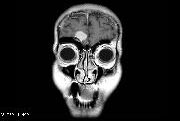Is this a case of a toothache, or of trigeminal neuralgia?
A person went to the dentist the last week, complaining of a stabbing pain in the lower right molar area. The dentist took some xrays, but no abnormality was found. The patient was sent to an oral surgeon, and a root canal was performed. The problem did not improve. After a week of antibiotics and pain killer medications, the patient was referred to a neurologist.
After an interview and an exam, the neurologist determined the cause was trigeminal neuralgia. Trigeminal neuralgia (TN) is a condition of irritation of the trigeminal nerve. The Trigeminal nerve supplies sensation to the face and movement to the masseter muscle, which helps us to chew. When a branch of the trigeminal nerve is irritated, it may result in pain, feeling like a burning, electrical sensation, or stabbing or aching. The trigeminal nerve branches may supply the upper face (forehead), midface (cheek) or mandible (lower jaw) on one side.
Usually the pain symptoms are brief, recurrent, and confined to one side of the face. Regions of the face supplied by the trigeminal nerve are referred to as V1, V2, and V3.
A medicine called carbamazepine was prescribed and the symptoms resolved after 1-2 months. Sometimes, an MRI study is done, especially in more difficult cases. Sometimes trigeminal neuralgia is caused by an artery. When the artery pulsates, it may wear the coating of the trigeminal nerve.
